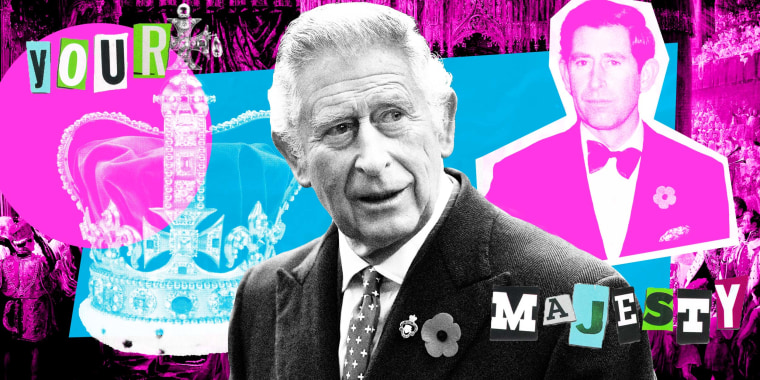LONDON — While King Charles III, 74, has ruled since his mother, Queen Elizabeth II, died in September, on Saturday he was crowned monarch of the United Kingdom of Great Britain and Northern Ireland, also becoming the largely ceremonial head of the Commonwealth.
The U.K. is the only country in Europe to hold a lavish coronation ceremony — other countries, such as France, have abolished the monarchy, opted for a more simple affair, like Norway, or have never had coronations, such as the Netherlands.
It was the 40th coronation at Westminster Abbey, a tradition dating to 1066. Charles’ wife, Camilla, previously known as the queen consort, officially became queen.
Elizabeth, who died at age 96, sat on the throne for a record 70 years. She was 27 when she was crowned in 1953 — an era-defining moment shown on the still-new medium of television for the first time. In contrast, Charles is a veteran royal who has traveled around the world many times representing the country.
Here’s everything that happened on the day:
Procession to Westminster Abbey
Public viewing areas along the route were open from 6 a.m. (1 a.m. ET). Space was limited, as many streets in and around the abbey were closed to traffic.
Early Saturday, the military units involved in planning and executing the event arrived at Waterloo Station and then moved across the city to help marshal the thousands of onlookers.
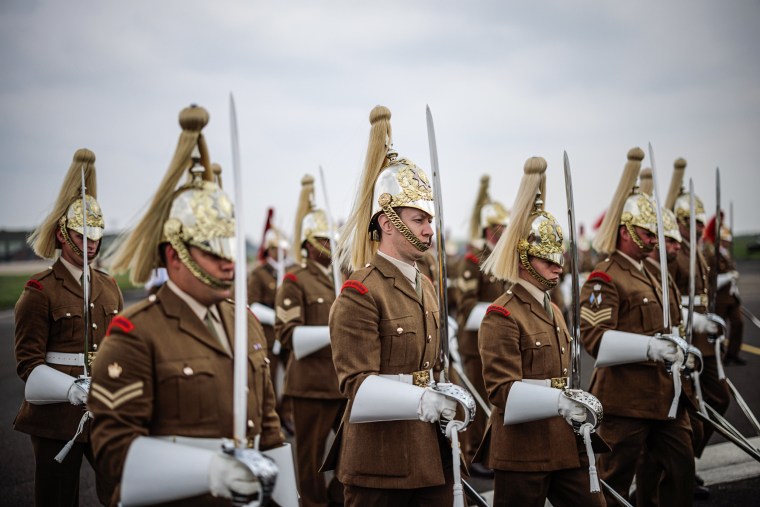

In the morning, the procession travelled from Buckingham Palace to the abbey in a journey lasting around 35 minutes. Charles and Camilla were in the Diamond Jubilee State Coach, first used by Elizabeth in 2014. The air-conditioned carriage, which weighs 3 metric tonnes (a little over 6,600 pounds) was pulled by six Windsor Grey horses, and is only ever used by the sovereign, occasionally alongside a visiting head of state.
Follow coronation ceremony live updates here
The gilded crown on the carriage roof was carved from oak from HMS Victory — Lord Nelson’s flagship at the Battle of Trafalgar in 1805 — and a piece of the mathematician Isaac Newton’s apple tree inscribed with his initials.
The service
The two-hour service began at 11 a.m. (7 a.m. ET). It was a somber and symbolic ceremony, largely unchanged in a millennium, in which Charles took on the role of sovereign.
The traditional Anglican anthem “I Was Glad” was sung as he entered, a piece based on Psalm 122 that has been used at this moment in coronations since at least 1626.
The coronation was presided over by Justin Welby, the archbishop of Canterbury, whose role has remained unchanged since 1066.
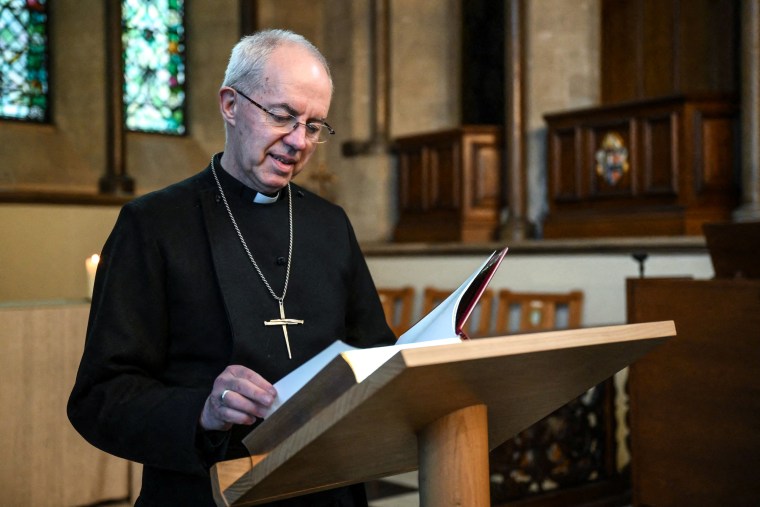
Welby delivered a liturgy, or sermon, in which he invited the millions of Britons watching to “make their homage, in heart and voice, to their undoubted King, defender of all.”
The service for the first time included languages from around the U.K., including a prayer in Welsh and a hymn sung in Welsh, Scottish Gaelic and Irish Gaelic.
Two thousand guests packed the abbey, including first lady Jill Biden and Prince Harry, Charles’ younger son, who has an acrimonious relationship with his father and elder brother, Prince William, and the royal establishment.
Charles was the 10th monarch to be crowned since America declared independence in 1776. No U.S. president has ever attended a British coronation, a tradition that continues.
The recognition and oath
After he entered the abbey, Welby called for recognition of the sovereign by the people — assembled dignitaries and senior royal household staff members then acclaim the king, pledging their homage, or loyalty.
Charles then took the coronation oath, a legal requirement since a law passed in 1689 compelled King William and Queen Mary to promise to maintain the Protestant faith. The same year, Parliament passed a law that bans any Catholic from taking the throne — a rule still in effect.
At Elizabeth’s coronation, the archbishop asked her whether she would govern the people of the U.K and the Commonwealth and uphold the Anglican faith. “All this I promise to do. The things which I have here before promised, I will perform, and keep. So help me God,” she replied.
The anointing
Then Charles was anointed, blessed and consecrated by Welby as he sat in the coronation chair, a relic first used in the coronation of King Edward II in 1308.
The process of anointing is inspired by the biblical anointing of King Solomon — it is a deeply religious moment, similar to a baptism. The oil was made with olives harvested from two groves from monasteries on the Mount of Olives in Jerusalem, where the Bible says Jesus prayed the day before his crucifixion.
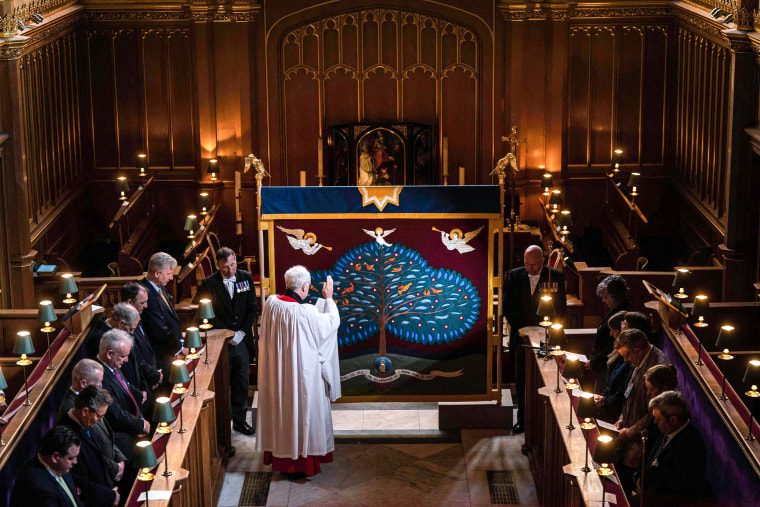
But the moment was hidden from the millions watching around the world by a screen: Tradition holds that the only witnesses will be the king, the archbishop and God.
Charles took off his crimson robes and any jewelry and wore just a simple robe as the archbishop poured oil on his head, hands and chest. As he did this, Welby said: “So be you anointed, blessed and consecrated King over the Peoples, whom the Lord thy God hath given thee to rule and govern.”
Handel’s anthem “Zadok the Priest” played during the ancient ritual. Shakespeare referred to the symbolism of the process in “Richard II”: “Not all the water in the rough rude sea/Can wash the balm off from an anointed king.”
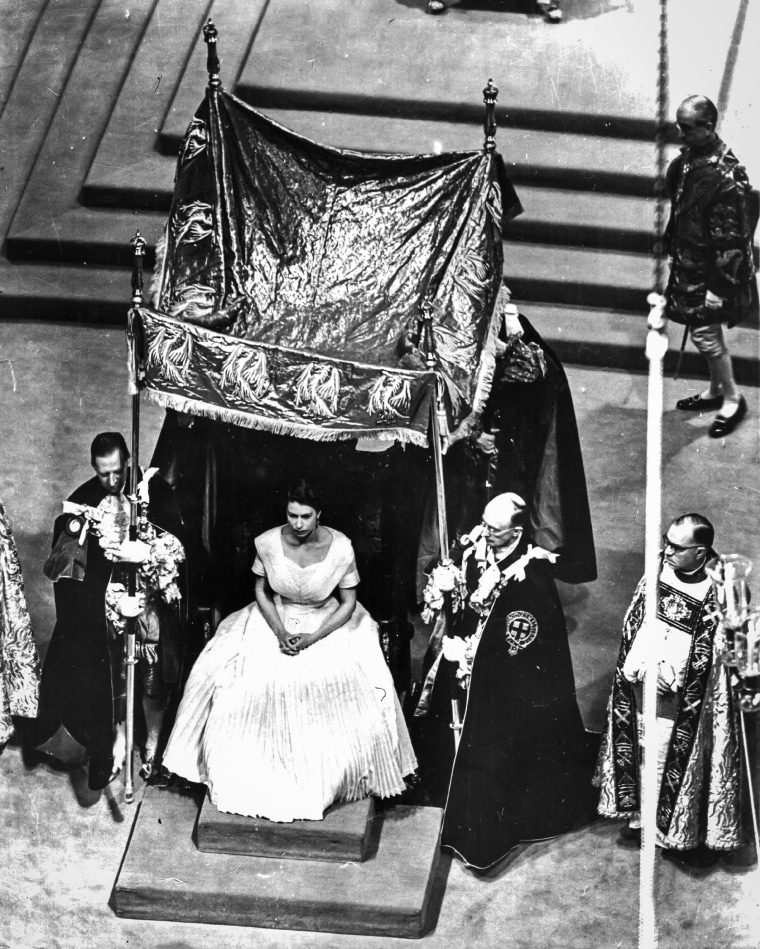
Not all monarchs revered it, however: Elizabeth I referred to the sacred oil as “grease” that “smelt ill,” according to George Gross, a theologian at King’s College London.
After Charles received the crown jewels, the orb and two scepters, Welby placed the St. Edward’s Crown on his head. The crown features a 4.9-pound solid gold frame complete with rubies, amethysts, sapphires, garnets, topazes and tourmaline gemstones. It was worn by Elizabeth during her coronation and has been refitted for her son.
At the end of the ceremony, Charles switched to the lighter Imperial State Crown for the procession back to the palace.
Gun salutes were fired from across Britain both at land and sea.
The reception
After the service, the procession took the king and queen back to Buckingham Palace in a different ceremonial carriage, the Gold State Coach, on the same route around Central London that Elizabeth’s body was taken during her funeral last year.
Some 5,000 armed forces personnel from across Britain and the Commonwealth accompany the newly crowned king and queen. A further 1,200 members of the British armed forces will line the route, according to plans shared by Buckingham Palace and the British government.
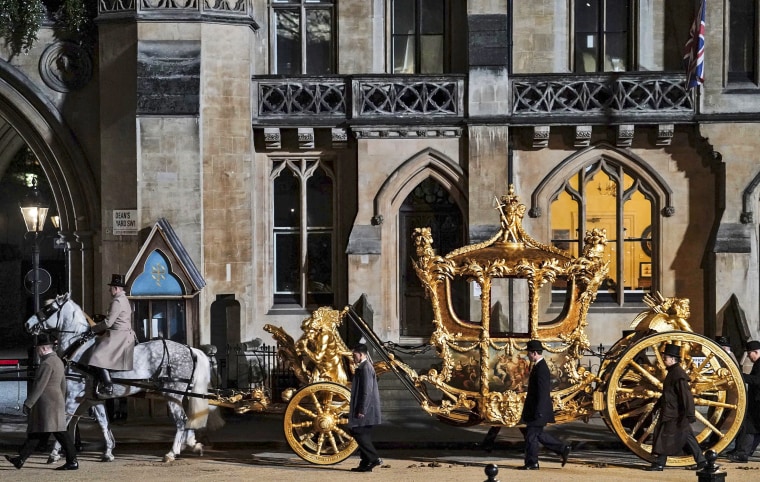
The Gold State Coach, commissioned in 1760, was first used by George III to travel to the state opening of Parliament two years later. It weighs 4 metric tonnes (almost 9,000 pounds) and needs eight Windsor Grey horses to pull it, and it can manage no more than a walking pace.
Elizabeth used it on her coronation day in 1953. On that unseasonably cold June day, royal staff members strapped a hot water bottle under her seat. Queen Victoria, her great-great-grandmother, was not fond of the gold coach and did not use it in seven state openings of Parliament, the Royal Collection Trust said.
The balcony moment and flypast
Charles and Camilla headed to the Buckingham Palace garden for a reception.
They then appeared on the famous palace balcony alongside their pages of honor and other senior royals — including the Prince and Princess of Wales, William and Catherine and Princes George and Louis and Princess Charlotte.
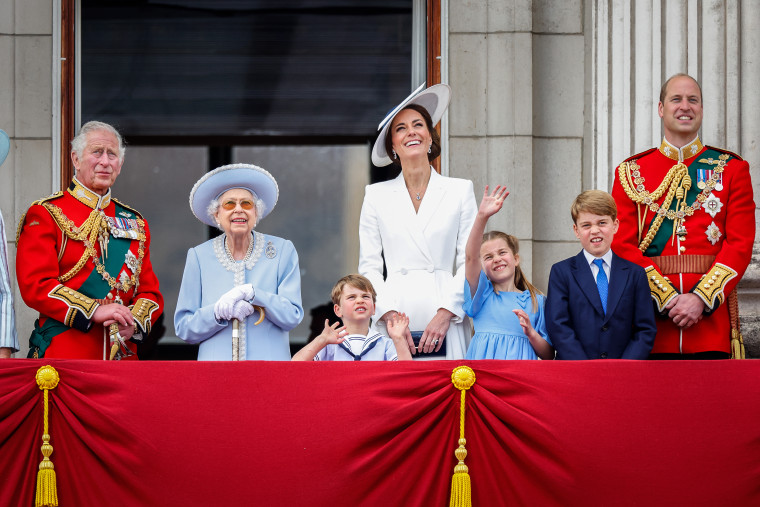
The final crescendo of the day’s pomp and circumstance was the six-minute flypast of more than 60 aircraft from the Royal Air Force, the British army and the Royal Navy, followed by the Royal Air Force’s aerobatics team, the Red Arrows.
Among the aircraft were planes that have delivered aid to Ukraine and policed NATO airspace, as well as Spitfires, the famous planes that flew in the Battle of Britain in 1940.
